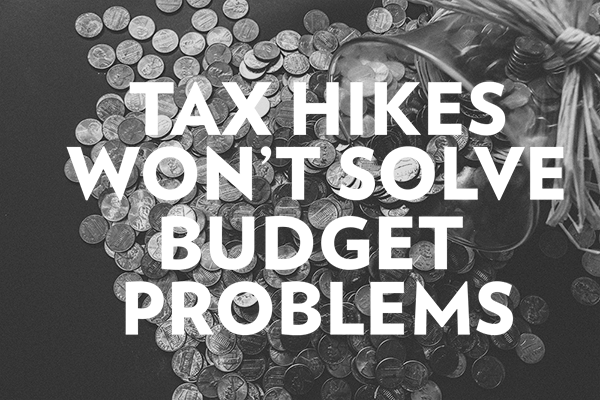Media

New Budget Report Demands Urgent Action
By 2023, the state deficit could reach more than $2 billion.
By 2030, Pennsylvania will have just 2.4 workers for every 1 person of retirement age.
These were some of the most alarming findings from the Independent Fiscal Office's (IFO) recent release of its annual budget and economic outlook report, revealing the challenging road ahead for Pennsylvania policymakers.
The IFO predicts budget deficits for the commonwealth over the next five years—starting with a nearly $1 billion deficit in 2018-19. At the end of this five-year window, the state’s deficit could reach more than $2 billion.
The IFO’s projections assume spending will rise each year by 3.8 percent. Human services and education, which account for nearly four-fifths of the General Fund budget, are driving these growth projections. In contrast, revenues are expected to rise by just 1.7 percent.
The mismatch between spending and revenues has been a problem for years. It’s why CF has routinely recommended reforms to reduce overspending in state government. The state cannot tax its way to financial security. Since 2009, the General Assembly has passed more than $4 billion in tax increases. And yet, the state’s fiscal problems persist. Pennsylvania isn’t an aberration. High tax states tend to be in a weaker financial position than low-tax states.
High-tax states also drive away their residents. The top 10 high-tax states lost more than 2.3 million people from 2010-2016. Over this same period, the comparably low-tax states gained more than 1.2 million people.
Pennsylvania’s own domestic migration trends are a cause for concern. From 2011 through 2015, the commonwealth lost a net 15,213 people to other states. The continued outflow of residents coupled with an aging population will create havoc on state finances if the tax-and-spend status quo is preserved.
These figures are especially relevant considering Pennsylvania’s troubling demographic trends. Per the IFO, by 2030, Pennsylvania will have just 2.4 workers for every 1 person of retirement age. To provide context, in 2010, this ratio was 3.9 workers for every 1 potential retiree. The state’s rapidly aging population is just another hurdle on the road to fiscal solvency.
If, however, lawmakers immediately begin embracing a combination of meaningful spending reforms and pro-growth policies, Pennsylvania can become the economic beacon of the Northeast. Only then can we can look forward to overcoming our economic, budgetary, and demographic challenges.